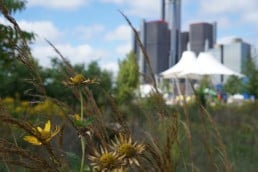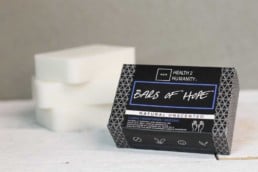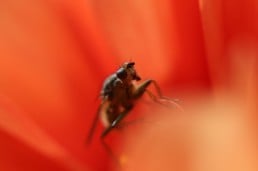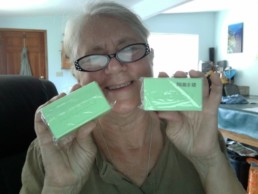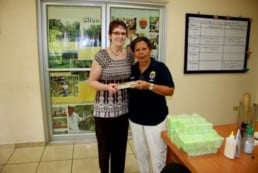Osana Partners with Wanderlust Outfitters
Here at Osana we are incredibly excited to introduce one of our newest partners: Wanderlust Outfitters!
About Wanderlust Outfitters
 Based in St. Joseph, Michigan, Wanderlust Outfitters is unlike other traditional outdoor outfitter stores. While other outfitting shops aim to draw in the experienced outdoorsman and the well-seasoned backcountry athletes, Wanderlust Outfitters ventures to serve not only these veterans, but also the under-served weekend warriors: day hikers, weekend campers, and those new to outdoor recreation.
Based in St. Joseph, Michigan, Wanderlust Outfitters is unlike other traditional outdoor outfitter stores. While other outfitting shops aim to draw in the experienced outdoorsman and the well-seasoned backcountry athletes, Wanderlust Outfitters ventures to serve not only these veterans, but also the under-served weekend warriors: day hikers, weekend campers, and those new to outdoor recreation.
Wanderlust Outfitters makes it their top priority to be welcoming to all and extremely knowledgeable of various brands, equipment, and apparel choices, so they can assist all of their customers, regardless of their experience.
After all, “wanderlust” is defined as a strong desire to travel and explore the world, and that is certainly not confined to just the veteran outdoorsman, but experienced by all.
Partnering to End Preventable Deaths
Wanderlust Outfitters is contributing to Osana specifically by allowing customers to donate bars once they’ve purchased a certain amount in the outfitting store. And, most importantly, they will be educating their customers about Osana: how it works and how they can help with our mission to eliminate the million-plus preventable deaths that occur yearly from mosquito and sanitation-related illnesses like zika, malaria, and dengue. All in all, it’s a win-win! Customers can meet Wanderlust’s amazing team and find the exact gear to fit their needs, while also helping us end all those preventable deaths!
Osana is an incredible all-natural mosquito repellent resource for camping, hiking, biking, hunting, and all other outdoor summer activities so we are honored to be connected with a store that provides a community focused around these areas specifically.
Wunderlust Team
Wanderlust Outfitters is founded by husband-and-wife team, Brittney and Jonathan Meier, who met at Anderson University in Indiana. As avid backpackers and campers themselves, the two have always fostered a passion for staying active outdoors, yet were frustrated when they realized there was a huge gap in the market for the weekend warriors, such as themselves. So the couple sprang into action.
With their personal experience outdoors and knowledge from previous employment, the duo created Wanderlust Outfitters in Southwest Michigan, a haven of forests, lakes, streams, and other beautiful aspects of nature. Housed in a historic building in St. Joseph, Wanderlust Outfitters also boasts beautiful and unique décor: from the reclaimed barn wood to the old bank vaults that now serve as fitting rooms.
And now Wanderlust Outfitters is bustling with an excited energy along with an outstanding showcase of seasonal gear and apparel as the store makes its preparations for its Grand Opening Labor Day weekend 2016.
We are beyond proud to have Wanderlust Outfitters as our newest partner, and we are so excited to see them grow and begin this amazing new journey.
US Cities with the Most Mosquitos
Mosquitoes are a bother wherever you live, but some places are considerably worse than others. Do you know the US cities with the most mosquitos? Recently, the pest control company Orkin released its annual report of the Worst US Cities for Mosquitoes*, and Atlanta, GA, for a third year in a row, snagged the not-so-coveted number 1 slot.
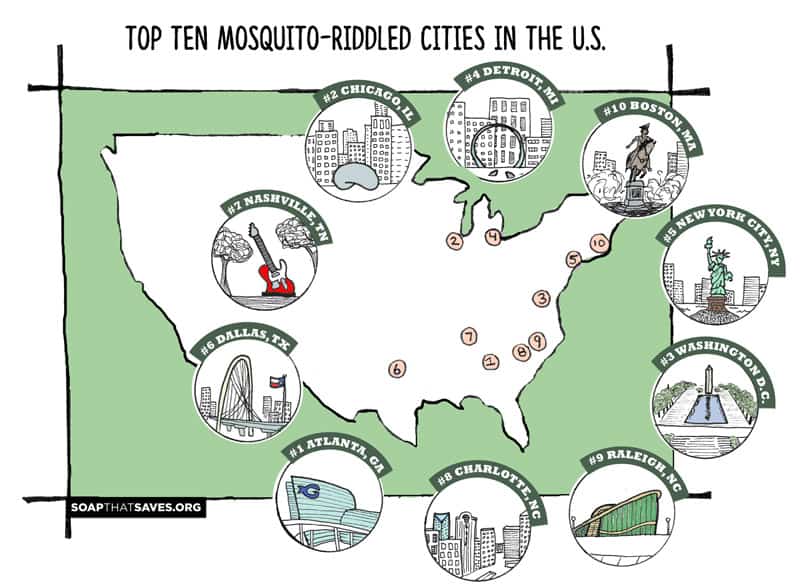
Unfortunately, recently matters have gotten worse as the specific species of Zika-carrying mosquitoes were detected in Atlanta in mid-May this year. Local officials have allocated half a million dollars to investigate this issue, but no substantial findings have been concluded thus far. Experts fear that the semi-tropical nature of Atlanta and of the Southern United States in general may be prime environments for the Zika virus to spread.
2. Chicago

While mosquitoes are definitely a great annoyance in the Second City, Chicago is very fortunate that the two species of mosquitoes that are known to carry the Zika virus, Aedes aegypti and Aedes albopictus, do not naturally live in the state of Illinois. However, that doesn’t mean residents are entirely immune. The city of Chicago confirmed its first local case of the Zika virus in early March when a resident returned home from a trip to Columbia, where she contracted the disease. According to mosquito expert and research assistant at the Chicago Department of Public Health, Alexandra Westrich, “It’s only a matter of how many people here re traveling and bringing it back,” which makes a Zika virus epidemic in Chicago very unlikely.
3. Washington D.C.

This summer, residents have been experiencing a notable increase in mosquito activity. The Capitol Mosquito Control on Capitol Hill reports that more than double the number of residents are making calls in for mosquito pest control issues compared to last year. In addition, the record-breaking streak of rainy days has many concerned because the drenched lawns are excellent environments for mosquitoes to breed.
4. Detroit

Although Detroit only has an annual high temperature of 56.7 degrees, it is still a top mosquito city. Detroit residents should also be aware that citizens in the neighboring Oakland County has just recently reported that local mosquitoes have tested positive for the West Nile Virus as of July 5, 2016. Fortunately, though, no person has contracted the virus yet, but the Oakland County Health Division Manager, Kathy Forzley, strongly advises residents take proactive measures to protect themselves against mosquito bites.
5. New York City

In NYC, there are approximately fifty-one different species of mosquitoes, which may seem a little overwhelming for local residents and tourists to deal with. So far, there have been 86 reported cases of the Zika virus in NYC, and all of them were contracted while traveling abroad. Although the metropolis does not naturally have warm environments prime for mosquitoes, NYC officials admit that the city has few defensive strategies to ward against mosquito-related viruses spreading. Therefore, the city has allocated nearly $21 million to be spent strengthening its mosquito testing and control system, including activating a six- step Zika virus action plan that includes giving out larvicide tablets, monitoring local mosquito populations, and establishing a public awareness campaign.
6. Dallas – Ft. Worth

There have been six known cases of Zika confirmed in Dallas County: five of which were contracted while traveling abroad and one was contracted through sexual contact. In addition, Dallas County Health and Human Services has also recently confirmed the first human case of the West Nile Virus in the county for this 2016 season. Unfortunately, scientists now report conditions that look eerily similar to the conditions in 2012, when Texas led the entire United States in West Nile virus cases.
7. Nashville, TN

This Southern city has an annual high summertime temperature of around 90 degrees with great humidity, which makes it an optimal location for mosquitoes. While the Zika-carrying Aedes aegypti mosquito is not native to Nashville, the other Zika-carrying mosquito, Aedes albopictus, is the most common in the area, so residents are warned to be very cautious and take preventative measures against all mosquito bites.
8. Charlotte, NC

While the Aedes agypti mosquito is not found in North Carolina, Charlotte officials are still taking precautions, specifically by eliminating standing water risks. As of mid-May, the city has surveyed over 1,300 sites that had been identified as potential mosquito breeding sites. If mosquito larvae was present at these sites, scientists would treat the water with a larvicide to kill the bunch.
9. Raleigh – Durham, NC

North Carolina as a whole has had at least five confirmed cases of the Zika virus, all of which were contracted from travelling abroad. Because of recent budget cuts, the state of North Carolina has somewhat lagged behind the nation in mosquito tracking, but local counties have begun establishing their own mosquito tracking programs.
10. Boston

According to local officials, mosquitoes in Boston are known to be able to spread both the West Nile Virus and Eastern Equine Encephalitis. In fact, on July 7, 2016, scientists confirmed the first case of West Nile Virus in Massachusetts for this season. And, according to the State Health Department’s Chief Disease tracker, Dr. Al DeMaria, “given the heat and dry conditions we have been experiencing, we are expecting to see more and more West Nile virus activity.”
* Report released in 2016, but cites data received in 2015.
Mosquito Infested Areas
Of the 50 US cities cited in this report for dense mosquito populations, exactly half were located in the South, where warm and moist temperatures provide excellent breeding opportunities for these tiny pests. While June, July, and August are usually the optimum months for mosquitoes to annoy the crap out of us, mosquito activity can begin as early as March in the southern United States, according to the Orkin report, and unfortunately, no state in the US is completely immune.
Please keep in mind, though, that this list only reports about cities in the United States. According to DC Mosquito Squad, it is believed that “Brazil, Indonesia, Malaysia, and Thailand have the highest numbers of mosquito species. Australia, Indonesia, the Philippines, and Brazil are recorded to have the highest number of endemic species.However, it is the whole of Africa, South America, and Asia where most of the mosquito- However, it is the whole of Africa, South America, and Asia where most of the mosquito-borne diseases occur.”
So if you do find yourself living in or traveling to one of these mosquito-riddled locations, you can always use Osana all natural mosquito repellent soap to protect yourself and your family from the pests while helping others around the world do the same.
Protection From Mosquitos
Learn what attracts mosquitos, natural mosquito protection like tea tree oil or neem oil, or learn how to make homemade mosquito traps!
“Atlanta, Southeast Region Top Mosquito Cities List.” Orkin. N.p., n.d. Web. 08 July 2016.
“Climate Detroit - Michigan. U.S. Climate Data. N.p., n.d. Web. 08 July 2016.
“Climate Nashville - Tennessee. U.S. Climate Data. N.p., n.d. Web. 08 July 2016.
“First Human Case of West Nile Virus Confirmed in Dallas County. NBC 5 Dallas-Fort Worth. N.p., 06 July 2016. Web. 08 July 2016.
“Garloch, Karen. Zika Threat Looms as Mosquito Season Arrives. The Charlotte Observer. N.p., 16 May 2016. Web. 08 July 2016.
“Lazar, Kay. West Nile Virus Detected in Mosquitoes in Worcester - The Boston Globe. The Boston Globe. N.p., 07 July 2016. Web. 08 July 2016.
“Levy, Nicole. 7 Ways to Keep Mosquitoes and the Zika Virus at Bay This Summer - Whitestone - DNAinfo New York.” DNAinfo New York. N.p., 25 May 2016. Web. 08 July 2016.
“Mosquito-borne Illness. Boston Public Health Commission.” N.p., n.d. Web. 08 July 2016.
“Mosquitoes - City of New York. NYC 311.” N.p., n.d. Web. 08 July 2016.
“Mosquitoes In Oakland County Test Positive For West Nile Virus. CBS Detroit.” N.p., 5 July 2016. Web. 08 July 2016.
“Rodriguez, Jonathon. North Carolina Falling behind in Tracking Mosquitoes. North Carolina News - WNCN.” N.p., 23 Mar. 2016. Web. 08 July 2016.
“Saurkauskas, Susan. As Mosquito Season Begins, Will Zika Strike Here? Daily Herald.” Chicago Daily Herald, 02 May 2016. Web. 08 July 2016.
“Shaver, Katherine. As Mosquito Season Shifts into High Gear in the Washington Region, so Do Zika. Washington Post.” The Washington Post, 12 May 2016. Web. 08 July 2016.
“Shaw, Marielle. Chicago Mosquitoes Could Ruin Your Life, But Probably Not With Zika Virus. Chicagoist.” N.p., 2 Mar. 2016. Web. 08 July 2016.
“Siron, Chris. Dallas County Getting Head Start on Fight against Mosquito Season. The Scoop Blog.” The Dallas Morning News, 25 Apr. 2016. Web. 08 July 2016.
“Worst Places in the World for Mosquitoes - DC Mosquito Squad.” DC Mosquito Squad. N.p., 2014. Web. 08 July 2016.
“Zika-carrying Mosquitoes Spotted in Atlanta. 11 Alive: WXIA.” N.p., 16 May 2016. Web. 08 July 2016.
Osana Partners with Health 2 Humanity Global
Health 2 Humanity Global: A Sustainable Hygienic Development Non-Profit
is a non-profit that focuses on training entrepreneurs in developing countries to have their own hygienic product businesses. Their model allows the need for hygienic solutions globally to be met, but in a sustainable way. For every bar that is sold through these businesses, the entrepreneurs donate a bar to their sponsored location within their community. Both Osana and Health 2 Humanity Global are passionate about seeing preventable diseases eradicated, but in a way that empowers people rather than victimizing them.
Health 2 Humanity’s Mission
Just like Osana, Health to Humanity Global exists to see preventable diseases eradicated. They believe that all people deserve to have equal access to lifesaving solutions. However, they do more than just give soap. Through the development of entrepreneurs in low-hygiene countries, they will not only see hygienic disparities addressed, but we will create a sustainable future without dependency.
Fight Against Giving
In their Fight Against Giving, Health 2 Humanity Global outlines the need for sustainability rather than the dependency-creating model that is used by many charities. The emphasis on vocational training allows skills to be acquired by people in developing countries and empowers them to meet the needs of their communities. This grass-roots model brings the hope for a clean future without dependency.
Current Impact Statistics of H2H Global
From May 2014- to the present Health 2 Humanity Global has seen:
- 12 locations implemented throughout Uganda, Ghana, and Kenya
- Over 20,000 bars of soap donated
- 22 jobs created (6 going on to college or job advancement)
- Up to 25% illness rate drop in sponsored areas
- Skin disease and rash almost completely
eradicated in sponsored areas
Health 2 Humanity Corp. All Natural Soap
Just as their international partners sell soap within their communities, Health 2 Humanity Corp. sells all-natural soap domestically. This can be purchased online at: www.h2hsoap.com. The majority of the proceeds go directly to funding the work of H2H Global. This allows the purchase of an everyday product to create a lasting impact globally (plus it is truly amazing soap).
H2H Soap Partners with Osana - All Natural Mosquito Repellent Soap
Osana and H2H soap have the common mission to see preventable diseases eradicated, and we are excited about partnering together to make this a reality. We both believe that all people deserve to have equal access to lifesaving solutions, including a simple bar of soap. The most exciting part is that both companies are interested in doing more than just giving away soap. Osana and H2H desire to work together to create sustainable change, empower local communities, and create life changing opportunities for people all over the world.
Areas with Zika Virus
Areas with Zika Virus
There are many areas with Zika virus. As this virus continues to spread, it is getting harder to determine where and how far it will spread over time.
According to the Center for disease control, below are the areas that are known for having active Zika virus:
No local mosquito-borne Zika virus disease cases have been reported in US states, but there have been travel-associated cases.
|
|
|
|
Other at Risk Areas with Zika Virus Include:
- Northern Australia
- Angola
- Zambia
- Amazon Basin,
- Northern South America
You can visit the CDC's page to look for current travel information regarding the Zika Virus.
Current Status
Currently, there is no cure or vaccination for this virus. The best protection is to become aware of areas with Zika, and take precautions to stay protected while traveling by using an all natural mosquito repellent, using essential oils like tea tree oil, wearing appropriate clothing, and staying away from still waters.
Check out our other helpful articles including how to tell if you have Zika Virus, Zika and pregnancy, and everything you need to know about Zika Virus.
Insects Commonly Mistaken for Mosquitoes
When summertime gets underway, it can be difficult to figure out what exactly is flying spastically around your face, into your nose, biting you, and giving you the best arm workout you’ve had in a while. When an insect is quickly darting all over your personal space, it’s easy to assume that pest is a mosquito, but don’t be so quick to judge. There are actually 7 insects commonly mistaken for mosquitoes.
Insects Commonly Mistaken for Mosquitoes
- Crane fly: Ranging from.25 inch to a whopping 1.25 inches in length. These doppelgangers, which are sometimes referred to as “mosquito hawks”because they are somewhat larger than the typical mosquito, will actually not bite you at all. So that’s something to happy about.
- Mayflies: These insects have a great affinity for water and do not typically stray far from their water sources. Also, they hatch from spring to autumn, not just in May as their name might imply. Ranging from .12 to 1.18 inches in length, mayflies have notoriously short life spans compared to a mosquito's life span (anywhere from a few hours to a couple days after emerging as an adult).
- Midge: Of the mosquito look-alikes, midges are the most numerous and widespread. Their numbers are so great that they are often seen in swarms, almost cloud-like forms. Unfortunately, they do bite. Midges live about seven days, typically, and just like mosquitoes, their larvae develop in large areas of stagnant water (learn more what attracts mosquitoes) And man do these insects have interesting love lives! Males will group together and form a cloud, intensely listening for any wing-beat frequencies of approaching females. This makes the male swarm incredibly sensitive to sound. If an onlooker should clap their hands or even speak, the swarm will make an erratic change in their swarm pattern.
- Fungus gnat: These winged creatures are much smaller, at about .079 to .197 inch long, and are most commonly found around decaying vegetation which is what their larvae feed upon. Even then, the adult fungus gnats only live two or three days. Most species are nonbiting. The dagger fly is also commonly mistaken for a mosquito. These insects have a large range of diversity, but are generally small to medium in size and particularly bristly, which is where they get their name. These flies tend to be a bit sly. Some species capture other insects in a frothy bag on their body and display them to attract female mates. Other species will forego with the froth altogether and just catch and display their live prisoners in front of their lady guests. Others, still, can enslave their prey with an empty ball of silk.
- Sand fly: is also a well-known biting pest. Most species feed on the blood of people commonly mistake them for mosquitoes. Specifically, only females are blood feeders; the males survive on the sugars of plant nectar or honeydew. Be extra careful of these pests. Instead of transmitting Zika Virus or dengue, these insects are known to transmit the following diseases: cutaneous leishmaniasis, visceral leishmaniasis, sand fly fever, Carrions disease, Pappataci fever, and the vesicular stomatitis virus.
- The dagger fly: Commonly mistaken for a mosquito. These insects have a large range of diversity, but are generally small to medium in size and particularly bristly, which is where they get their name. These flies tend to be a bit sly. Some species capture other insects in a frothy bag on their body and display them to attract female mates. Other species will forego with the froth altogether and just catch and display their live prisoners in front of their lady guests. Others, still, can enslave their prey with an empty ball of silk.
- Wood gnat: Attracted to light, wood gnats are generally found near windows, particularly in the springtime, though they are indeed active all year long. The larvae can live in a great variety of environments: rotting plants, fermenting sap, animal manure, tree trunks, mud, and even sewage.
There are many ways to keep mosquitoes and their look a likes away. Try these homemade mosquito traps, plants that repel insects, tea tree oil repellent, or natural insect repellent soap to keep all insects away during the summer heat!
References:
Biting Flies Illinois Department of Public Health. N.p., n.d. Web. 11 July 2016.
Doucette, David.;Mosquito Mistaken Identity: These Flies Don't Bite - After Bite Insectlopedia.; After
Bite Insectlopedia. N.p., n.d. Web. 11 July 2016.
Mistaken Identities.; American Mosquito Control Association. N.p., n.d. Web. 11 July 2016.
Sand Flies; Orkin. N.p., n.d. Web. 11 July 2016.
How to Know if you Have Zika Virus
Wondering How to Know if you Have Zika Virus?
Zika virus, which is spread to people primarily through the bite of an infected Aedes species mosquito. It is important how to know if you have the Zika virus.
How to Know if you Have Zika Virus
If you have recently been bitten by a mosquito, pay attention if the following symptoms occur.
- Fever
- Rash
- Joint pain
- Conjunctivitis (red eyes)
- Muscle pain
- Headache
Zika virus usually remains in the blood of an infected person for about a week but it can be found longer in some people. Illness is usually mild with symptoms lasting for several days to a week after being bitten by an infected mosquito. People usually don’t get sick enough to go to the hospital, and they very rarely die of Zika.
Diagnosis of Zika Virus
According to the Center of Disease Control:
- The symptoms of Zika are similar to those of dengue and chikungunya.
- See your healthcare provider if you develop the symptoms described above and have visited an area where Zika is found.
- Your healthcare provider can order blood tests to confirm Zika
Zika and Pregnancy
If you visited an area that has Zika, and there is a chance you may be pregnant- be sure to check out the guidelines for Zika and pregnancy to find out what to do.
Protection
- All natural mosquito protection
- Read How to Protect Yourself from Zika this Summer
- Tea tree oil for mosquitos
- Homemade mosquito traps
Osana and Invictus Stop Zika Virus In Brazil
Osana anti-mosquito soap company partners with non-profit organization 'The Invictus Initiative' to help stop and prevent The Zika virus in Brazil.
Osana and Invictus both have similar missions to help create sustainable change in communities all over the world by empowering the local people as well as stop preventable deaths.
The Invictus Initiative
The Invictus Initiative is a non-profit organization building unconquerable relationships that bring together the skills and resources needed to initiate sustainable solutions, improve communities, and transform lives.
Invictus Initiative in Brazil
This organization has been working in Rio de Janeiro, Brazil for the last four years. They have been working in a community located in the mountain tops of Brazil through building relationships, construction, business development, and providing them opportunities to dream big and create a sustainable, life-giving community.
Osana and Invictus Partner Together to Help Zika Virus in Brazil
In a recent trip to Brazil, Invictus partnered with Osana to put together kits for the woman in this impoverished community. The kits including education and information about Zika and how to prevent it, mosquito nets, and of course, Osana all natural-antimosquito soap. The goal was to give it out to expecting mothers in hopes to protect them from the damaging virus.
Invictus met with leaders and government officials in Brazil to see what was being done to stop Zika and to see how Osana and Invictus could fill in that gap. Simply providing the community with education, nets, and soap seemed to be the most effective option, and the communities received everything with enthusiasm and gratitude.
On top of the kits, Invictus also created an incredible system within the local community that consists of:
- Partnering with the Local Health Professionals who were already seeing pregnant mothers and had them write prescriptions for each mother to receive a Zika kit and give the woman enough Osana Soap to last them throughout their pregnancy.
- Partnering with the local community center and stocked them up with Osana Soap. Instead of giving it away for free, as discussed in the book "When Helping Hurts", the soap has a small price so the community members are invested. 100% of the proceeds go back into the community.
Invictus plans to return to this community in November to follow up with the expecting mothers and community members.
Zika Virus Protection for Summer
According to the Center for Disease Control, there are easy, effective ways to protect yourself from the Zika Virus no matter where you may be traveling.
Zika Virus Protection
How to Protect Yourself from Zika Virus
No matter where you travel, there are certain precautions you can take to ensure you are safe, well, and healthy. Eating a healthy diet, drinking plenty of water, as well as using the following forms of protection will give you the best chance at staying healthy all summer long!
- Cover and Repel
When going outside into a mosquito infected area, wearing long sleeves and pants as well as using a repellent gives you the best zika virus protection.
We like to use powerful and non-toxic options such as Osana bar natural non-toxic mosquito soap, or other natural mosquito bite prevention methods.
- Keep Mosquitoes out of Your Home
There are many effective ways to protect your home from mosquitoes. Our favorites include: DIY mosquito traps, and planting certain herbs and plants around your home that repel mosquitoes.
- Remove Collected Water
Standing water around your home is one of the biggest factors in attracting mosquitoes. Doing a weekly check to remove any standing water is critical in preventing zika virus.
- Use Condoms if Pregnant
For the best Zika virus protection, if you are traveling to an area that has Zika virus, the CDC recommends waiting 6 months to a year to try and get pregnant.
Osana Anti-mosquito Soap Donates Bars to Cook Islands, HI
Lisa Shock, a resident of Captian Cook, HI reached out to us and was concerned about a Dengue outbreak in her area and was asking about Antimosquito Soap
She wrote:
We are fighting an outbreak of Dengue Fever here on the big Island of Hawaii, I live in one of the poorest areas: Ocean View, with many homeless people. My church ( St Judes) donates free showers to the homeless o
r needy people in our area once a week. If you have donated bars to distribute we could sure use all that you might want to donate. There is no Malaria here but we do have ongoing issues with dog heartworms being transmitted to humans via mosquitos. Our subdivision is is totally on Catchment water, so every home has a large place where mosquitoes can breed, efforts to treat these is a ongoing problem. We have about 10,000 homes in our neighborhood, and a few hundred homeless people that camp in tents or other primitive conditions. The health department has been spraying for mosquitoes since the outbreak started, and 2 beaches near us are closed due to the Dengue.
We were delighted to help and send Osana natural antimosquito soap donation bars her way.
Here is her report back after use of the Antimosquito Soap...
So far everyone that has tried the soap likes the smell and noticed a reduction or elimination of mosquito bites. I have noticed it took about 2 days to start working and then it has worked 100% for me. Another person, Bill is one of those people that the mosquitoes love, he gets about 20 bites when he outside for about an hour. It also took a few days for him to notice it was working, and now he rarely gets bit.
Actually, everyone that is trying it just loves it, I am giving them the web site so they can reorder, and will get some pictures for you as well.
We are thrilled to be spreading protection and partnering with individuals to make a huge difference in their communities!
Osana Anti-mosquito Soap in Honduras
Recently, some individuals from William Jewell College in Missouri purchased some Osana anti-mosquito soap travel bars and donation bars to take with them on a trip to Honduras.
Check out the feedback we received from one of the participants! It is amazing seeing individuals working together from all over the world to saves lives.
Hi there,
We’ve been back for about a week, I wanted to tell you what we’ve done with the OSANA bars we took to Honduras.
By the way our team used them - they work great!
We gave pretty good stack of bars to the "Office of Vinculization" (Which roughly translates to The Office of Community Development) at UNAH CURLA University in La Ceiba Honduras. The Director’s name is Evangelina Trejo Sosa (Pictured on right) The other woman is Dr. Lori Wetmore, (Left) the director of our Village Partners program here at Jewell.
Our thinking at this point was to introduce them to the product and allow the students, faculty and staff get acquainted with the soap. This school specializes in agriculture and works with folks in rural Honduras.
Given the current concerns about the Zika virus as well as their ongoing battles with Dengue and Malaria,
They are going to consider potential ways to utilize this product effectively - and we will get updates from them in time.
Our next trip is in January of 2017. I do know based on the results of this last trip, I will be ordering more for our next group.
Zika and Pregnancy
As summer arrives and vacations abroad are being planned, pregnant woman and woman trying to conceive are curious about the effects Zika Virus and pregnancy.
The Concern for Zika and Pregnancy
Microcephaly is an abnormal smallness of the head, a congenital condition associated with incomplete brain development.
In a recent study by the Center for Disease Control reports that "scientists announced that there is now enough evidence to conclude that Zika virus infection during pregnancy is a cause of microcephaly and other severe fetal brain defects and has been linked to problems in infants, including eye defects, hearing loss, and impaired growth. Scientists are studying the full range of other potential health problems that Zika virus infection during pregnancy may cause."
In addition to microcephaly, other problems have been detected among fetuses and infants infected with Zika virus before birth, such as eye defects, hearing loss, and impaired growth.
How to Protect Your Baby from Zika
- Avoid travel to an area with Zika: The CDC recommends special precautions for pregnant women. Women who are pregnant should not travel to any area where Zika virus is spreading.
- Prevent Mosquito Bites: Use natural mosquito repellant, long clothing, and essential oils to prevent bites. More info on how to protect yourself from Zika here.
- Avoid Sexually transmitted Zika: If a male has traveled to a place with Zika, it is best to avoid sexual contact or use protection for at least 6 months.
- Wait to conceive: If the woman or man contracted Zika, it is advised to wait 1 year for the virus to clear before trying to conceive. If the man or woman has traveled to a place with Zika, it is advised to wait 3-6 months to conceive.
- If you are pregnant: There is no vaccine for Zika, see a healthcare provider for further instruction.
How to Use Tea Tree Oil as a Natural Medicine for your Body
As far as essential oils go, tea tree oil goes beyond the ordinary in terms of healing and nourishing the skin and body. Although there are numerous ways to use tea tree oil, applying it topically on the skin may be one of the MOST effective uses.
Tea tree oil has so many antiviral and antifungal benefits that the Australian army puts it in soldiers' first aid kits for its many uses. It's true! You can use tea tree oil in a variety of ways, especially to heal your skin.
Tea tree oil is an excellent treatment for acne. One study found tea tree oil to be just as effective as benzoyl peroxide, but without the negative side effects like redness and peeling. Tea tree oil can also treat minor wounds, encourage healing, and prevent infection. So, you may want to add this versatile natural product to your own first aid kit!
How to Use Tea Tree Oil as a Natural Medicine for your Body
There are numerous skin conditions in which tea tree oil should be applied.
-
Cuts and Wounds:
Peggy O'Mara, author of the book "Natural Family Living," suggests that you wash mild wounds or skin abrasions with a blend of tea tree oil and warm water.
-
Applying Oil to Cut:
Create the blend by mixing one part tea tree oil with 10 parts water. Apply a few drops of the oil directly to the clean cut. Dip the damaged skin in the tea tree oil solution or dab the diluted oil onto the bare skin with a cotton ball. Watch the wound closely for signs of healing. You may also place a few drops of the oil on a cotton ball, then lay it face down on the wound with a bandage on top.
-
Insect Bites:
 Apply a drop or two of oil directly to the bite with a cotton swab, along with using Osana All Natural Mosquito Repellent Soap for prevention and fast healing.
Apply a drop or two of oil directly to the bite with a cotton swab, along with using Osana All Natural Mosquito Repellent Soap for prevention and fast healing. -
Eczema:
Tea tree oil can help relieve any type of skin inflammation, including being used as a natural eczema treatment.
-
Make a lotion:
Mix one teaspoon coconut oil, five drops of tea tree oil and five drops of lavender oil to make homemade tea tree oil eczema lotion or body soap
-
Acne:
Tea tree oil is a great natural alternative for getting rid of pimples. It has unique disinfecting and soothing properties and, unlike other acne treatments, tea tree oil will not strip your skin of its natural oils and cause further damage. Apply tea tree oil directly to pimples (for more than 15%, dilute with water). Tea tree oil can be applied directly to pimples for an effective and natural acne treatment. It contains natural antibacterial properties. Just a small amount of oil will penetrate the skin to unblock the sebaceous glands, disinfect pores and dry out whiteheads, blackheads, pimples and other blemishes.
-
Spot Treatment:
To apply, pour a few drops of tea tree oil onto a cotton swab, cotton pad or tissue. Gently dab the tea tree oil onto any pimples or spots. Leave for a few hours, or overnight. The redness and swelling should decrease.
-
Make a Face Wash:
You can make a tea tree oil acne face wash by mixing five drops of tea tree essential oil with two teaspoons of raw honey. Simply rub on your face, leave on for one minute, then rinse off.
-
Tea Tree Oil as Deodorant:
Tea tree oil eliminates body odor because it has antimicrobial properties that destroy the bacteria that cause body odor.
-
Make Your Own Deodorant:
Make homemade tea tree oil deodorant by mixing it with coconut oil and baking soda and applying it under your arms.

We recommend Tea Tree Therapy as it's 100% Pure Australian Tea Tree Oil (no fillers!).


